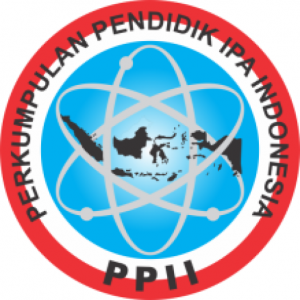Identification of Coffee Plant Pests in Plantations in The Brenggolo Area, Jatiroto Sub-District, Wonogiri District
Authors
Suci Nurhayati , Tri WihartiDOI:
10.29303/jbt.v25i1.8600Published:
2025-02-21Issue:
Vol. 25 No. 1 (2025): Januari - MaretKeywords:
Coffee plants, environmental conditions, pests.Articles
Downloads
How to Cite
Downloads
Metrics
Abstract
Pests that attack coffee plants can have an impact on decreasing productivity and quality of coffee harvests in the area. This study aims to identify coffee plant pests in the Brenggolo area plantation, Jatiroto sub-district, Wonogiri district. This study was conducted for 2 months, from January 2025 to February 2025, at the Brenggolo village coffee plantation, Jatiroto sub-district, Wonogiri district. Data obtained from observations of plant samples and coffee berries attacked by pests, as well as interviews with managers and owners to obtain information on the types of pests and environmental conditions of the plantation land. The results of the study found several pests that attack coffee plants, including Hypothenemeus hampei (Coffee Berry Borer Pest), Xylosandrus compactus (coffee branch borer pest), Ferrisia virgate (Whitefly), Coccus viridis (green aphid pest), Pratylechus coffeae Nematodes (Root Wound Nematodes), and Sanurus indecora jacobi (Planthopper). Pest life is greatly influenced by environmental factors such as altitude, temperature and humidity. The geographical conditions of the Brenggolo plantation, which is at an altitude of 920 meters above sea level, with temperatures ranging between 20°C - 28°C and humidity of 81%, are an environment that supports the development of various types of coffee pests. Identification of pest types and environmental characteristics in the Brenggolo Plantation is expected to be the basis for the formation of an effective pest control strategy. With location-specific pest management, it is expected to increase the productivity and quality of coffee in the area.
References
Badan Pusat Statistika (2023). Statistik Kopi Indonesia 2022. Diakses pada 20 November 2024 dari https://www.bps.go.id/id
Erfandari, ovy, Hamdani, H., & Supriyatdi, D. (2019). Keragaman Intensitas Serangan Hama Penggerek Buah Kopi (Hypothenemus Hampei Ferrari) Pada Beberapa Sentra Produksi Kopi Robusta Provinsi Lampung. Jurnal Penelitian Pertanian Terapan, 19(3), 244-249. https://doi.org/10.25181/jppt.v19i3.1523
Fintasari, J., Rasnovi, S., Yunita, Y., & Suwarno, S. (2018). Fase pertumbuhan dan karakter morfologi kumbang penggerek buah kopi, Hypothenemeus hampei Ferrari (Coleoptera: Curculionidae) pada umur buah berbeda. Jurnal Bioleuser, 2(2). https://doi.org/10.24815/bioleuser.v2i2.14885
Gemasih, M., Djufri, D., Abdullah, A., & Hasanuddin, H. (2022). Pest Distribution Pattern of Hypothenemus Hampei in Arabica Coffee Plantations. SIGn Journal of Science and Education, 1(1), 1-6. https://doi.org/10.37276/sjse.v1i1.135
Greco, E. B., & Wright, M. G. (2015). Ecology, biology, and management of Xylosandrus compactus (Coleoptera: Curculionidae: Scolytinae) with emphasis on coffee in Hawaii. Journal of Integrated Pest Management, 6(1), 7. https://doi.org/10.1093/jipm/pmv007
Gugliuzzo, A., Criscione, G., Biondi, A., Aiello, D., Vitale, A., Polizzi, G., & Tropea Garzia, G. (2020). Seasonal changes in population structure of the ambrosia beetle Xylosandrus compactus and its associated fungi in a southern Mediterranean environment. PLoS One, 15(9),e0239011. https://doi.org/10.1371/journal.pone.0239011
Hamilton, L. J., Hollingsworth, R. G., Sabado-Halpern, M., Manoukis, N. C., Follett, P. A., & Johnson, M. A. (2019). Coffee berry borer (Hypothenemus hampei)(Coleoptera: Curculionidae) development across an elevational gradient on Hawai ‘i Island: Applying laboratory degree-day predictions to natural field populations. PLoS One, 14(7), e0218321. https://doi.org/10.1371/journal.pone.0218321
Harahap, D. (2021). Pengendalian Hama Tanaman Belum Menghasilkan Kelapa Sawit (Elaeis guineensis Jacq) di PT. Supra Matra Abadi Kebun Aek Nabara, Provinsi Sumatera Utara. https://sv.ipb.ac.id
Harum, S. (2022). Analisis produksi kopi di Indonesia tahun 2015-2020 menggunakan metode Cobb-Douglass. Growth: Jurnal Ilmiah Ekonomi Pembangunan, 4(2), 101-108. https://e-journal.unimaju.ac.id/index.php/GJIEP/article/view/9
Jaramillo, J., Chabi-Olaye, A., Kamonjo, C., Jaramillo, A., Vega, F. E., Poehling, H. M., & Borgemeister, C. (2009). Thermal tolerance of the coffee berry borer Hypothenemus hampei: predictions of climate change impact on a tropical insect pest. PloS one, 4(8), e6487. https://doi.org/10.1371/journal.pone.0006487
Jha, S., Vandermeer, J. H., & Perfecto, I. (2009). Population dynamics of Coccus viridis, a ubiquitous ant-tended agricultural pest, assessed by a new photographic method. Bulletin of Insectology, 62(2), 183-189. ISSN 1721-8861
Karmawati, E. L. N. A. (2008). Perkembangan jambu mete dan strategi pengendalian hama utamanya. Jurnal Perspektif, 7(2), 102-111. https://doi.org/10.21082/jlittri.v10n1.2004.1-7
Leonardo, V., & Milantara, N. (2023). Pests And Diseases Of Arabika Coffee (Coffea Arabika) In Hkm Solok Radjo, Aie Dingin, Lembang Gumanti District, Solok District, West Sumatra Province. Sylva: Jurnal Penelitian Ilmu-Ilmu Kehutanan, 12(1), 12-20. https://doi.org/10.32502/sylva.v12i1.7041
Mardiningsih, T. L., Karmawati, E., & Wahyono, T. E. (2006). Peranan Synnematium sp. dalam pengendalian Sanurus indecora Jacobi (Homoptera: Flatidae). Industrial Crops Research Journal, 12(3), 103-108. https://doi.org/10.21082/jlittri.v12n3.2006.103-108
Miftakhurohmah, M., Hidayat, S. H., Mutaqin, K. H., Soekarno, B. P. W., & Wahyuno, D. (2022). Study on Ferrisia virgata and Planococcus minor as vectors of mottle disease in black pepper. In IOP Conference Series: Earth and Environmental Science (Vol. 974, No. 1, p. 012030). IOP Publishing. DOI 10.1088/1755-1315/974/1/012030
Mubaroq, A. K., Ratnawati, R., Izah, I. L., Abyan, A. K., Irsyadi, M. B., & Rosyady, M. G. (2024). Identifikasi dan Analisis Pengendalian Organisme Pengganggu Tanaman Kopi Robusta (Coffea Canephora) di Desa Curahpoh, Curahdami, Bondowoso. Proceedings Series on Physical & Formal Sciences, 7, 1-8. https://doi.org/10.30595/pspfs.v7i.1191
Muliani, S., & Nildayanti, N. (2018). Inventarisasi hama dan penyakit pada pertanaman kopi organik. Agroplantae: Jurnal Ilmiah Terapan Budidaya dan Pengelolaan Tanaman Pertanian dan Perkebunan, 7(2), 14-19. https://www.semanticscholar.org/paper/INVENTARISASI-HAMA-DAN-PENYAKIT-PADA-PERTANAMAN-Muliani-Nildayanti/f67f41315b0f4f24b9c8320f64a5c9c32a23ddae?utm_source=direct_link
Nadiawati, S., Adrinal, A., & Efendi, S. (2023). Perbandingan tingkat kerusakan buah kopi oleh hama penggerek (Hypothenemus hampei ferr.) pada perkebunan kopi arabika (Coffea arabica l.) dengan ketinggian berbeda. Media Pertanian, 8(1), 47-58. DOI: https://doi.org/10.37058/mp.v8i1.6972
Nurmasari, F., & Si, S. P. (2020). Identifikasi keanekaragaman dan pola sebaran hama kutu putih dan musuh alaminya pada tanaman singkong (Manihot Esculenta) di Kabupaten Banyuwangi. BIOTROPIKA Journal of Tropical Biology, 8(3). 10.21776/ub.biotropika.2020.008.03.05
Oliveira, M. D., Silva-Torres, C. S., Torres, J. B., & Oliveira, J. E. M. (2014). Population growth and within-plant distribution of the striped mealybug Ferrisia virgata (Cockerell) (Hemiptera, Pseudococcidae) on cotton. Revista Brasileira de Entomologia, 58, 71-76. https://doi.org/10.1590/S0085-56262014000100012
Prastowo, B., Karmawati, E., Indrawanto, C., & Munarso, S. J. (2010). Budidaya dan pasca panen kopi. Pusat Penelitian dan Pengembangan Perkebunan. http://repository.pertanian.go.id/handle/123456789/13755
Purba, R. P., Bakti, D., & Sitepu, S. F. (2015). Hubungan persentase serangan dengan estimasi kehilangan hasil akibat serangan hama penggerek buah kopi Hypothenemus hampei Ferr.(Coleoptera: Scolytidae) di Kabupaten Simalungun. Jurnal Agroekoteknologi Universitas Sumatera Utara, 3(2), 104777. DOI: 10.32734/jaet.v3i2.10368
Samsuri, S. (2019). Keanekaragaman Serangga Hama, Predator, Dan Parasitoid Pada Perkebunan Kopi Seat Ungaran. Agroista: Jurnal Agroteknologi, 3(1). http://journal.instiperjogja.ac.id/index.php/AGI/article/view/918/882
Saputra, Y., Anindita, D. C., Hadiyanti, N., Supandji, S., & Hapsari, L. (2024). Characterization and impact of planthopper (Sanurus indecora) infestation on kepel (Stelechocarpus burahol) plants. Jurnal Ilmiah Pertanian, 21(3), 174-181. https://doi.org/10.31849/jip.v21i3.19003
Solichah C., Wicaksono D., Waluya ., Brotodjojo Rr. R., (2020). Pengendalian Hayati Hama Dan Penyakit Tanaman Kopi. http://eprints.upnyk.ac.id/id/eprint/35695
Sugiarti, L. (2019). Identifikasi hama dan penyakit pada tanaman kopi di kebun percobaan Fakultas Pertanian Universitas Winaya Mukti. Jurnal Agro Wiralodra, 2(1), 16-22. https://doi.org/10.31943/agrowiralodra.v2i1.27
Syarkawi, S., Husni, H., & Sayuthi, M. (2015). Pengaruh tinggi tempat terhadap tingkat serangan hama penggerek buah kakao (Conopomorpha cramerella Snellan) di Kabupaten Pidie. Jurnal Floratek, 10(2), 52-60. https://doi.org/10.17969/floratek.v10i2.3062
License
Copyright (c) 2025 Suci Nurhayati, Tri Wiharti

This work is licensed under a Creative Commons Attribution 4.0 International License.

Jurnal Biologi Tropis is licensed under a Creative Commons Attribution 4.0 International License.
The copyright of the received article shall be assigned to the author as the owner of the paper. The intended copyright includes the right to publish the article in various forms (including reprints). The journal maintains the publishing rights to the published articles.
Authors are permitted to disseminate published articles by sharing the link/DOI of the article at the journal. Authors are allowed to use their articles for any legal purposes deemed necessary without written permission from the journal with an acknowledgment of initial publication to this journal.


























